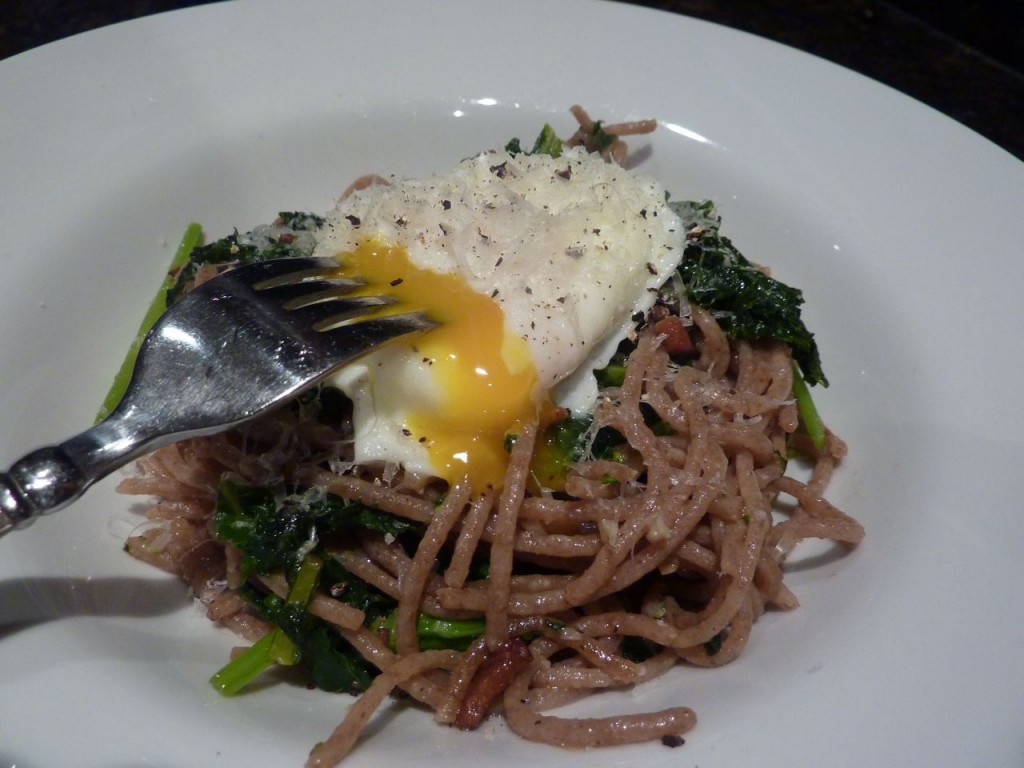
Here is a recipe which I must describe as ‘Italian inspired’, rather than a strict interpretation of a traditional regional Italian dish. When we are on one of our Italiaoutdoors culinary adventures in Italy, we learn about the regional dishes, but our real inspiration is the wonderful local, seasonal produce we discover. The inspiration here is the same – the first visit of the year to the Newburyport Farmer’s Market. Various mixed spring greens, a couple of wonderful fresh eggs, and a homemade whole wheat pasta were the spoils. Now, what to do with them?
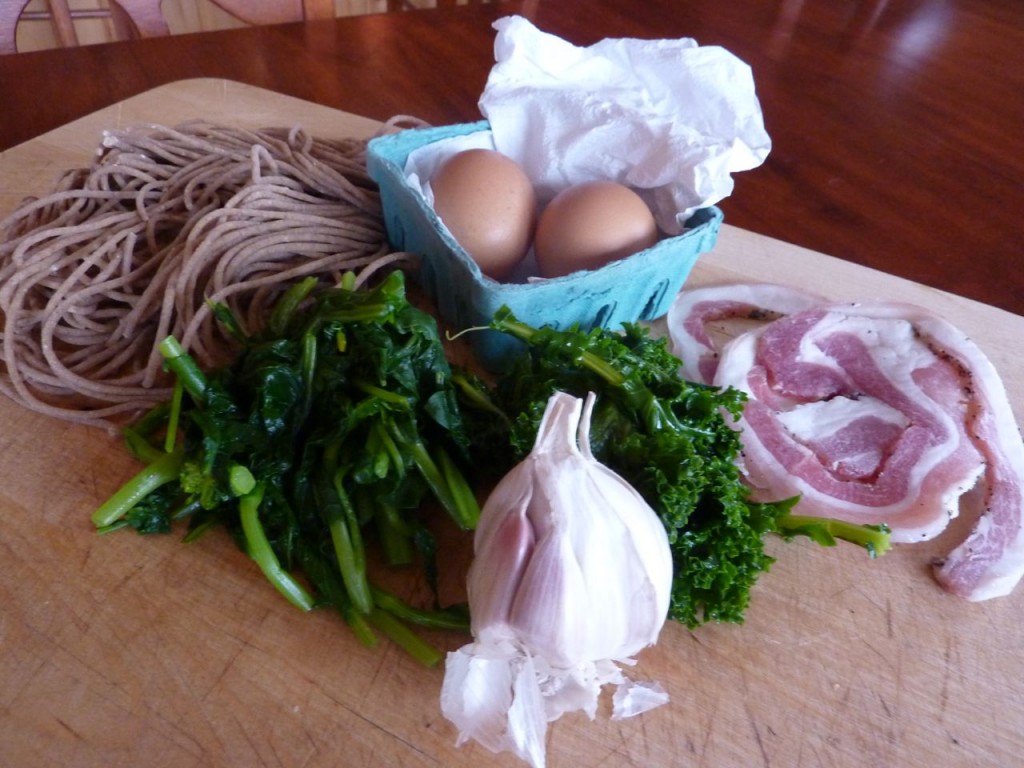
I have always enjoyed poached eggs with greens for breakfast, and earlier had posted a recipe here that topped buckwheat polenta with greens and a poached egg. I also had a conversation recently with someone who had described the standard American version of spaghetti alla carbonara to some Italians during a recent trip to Italy – they were pretty horrified by her description, something more akin to an alfredo sauce, with lots of cream. The traditional carbonara ingredients are eggs, bacon or pancetta (or guanciale), and cheese. Some nice spring greens would be a perfect addition here. And so this recipe evolved.
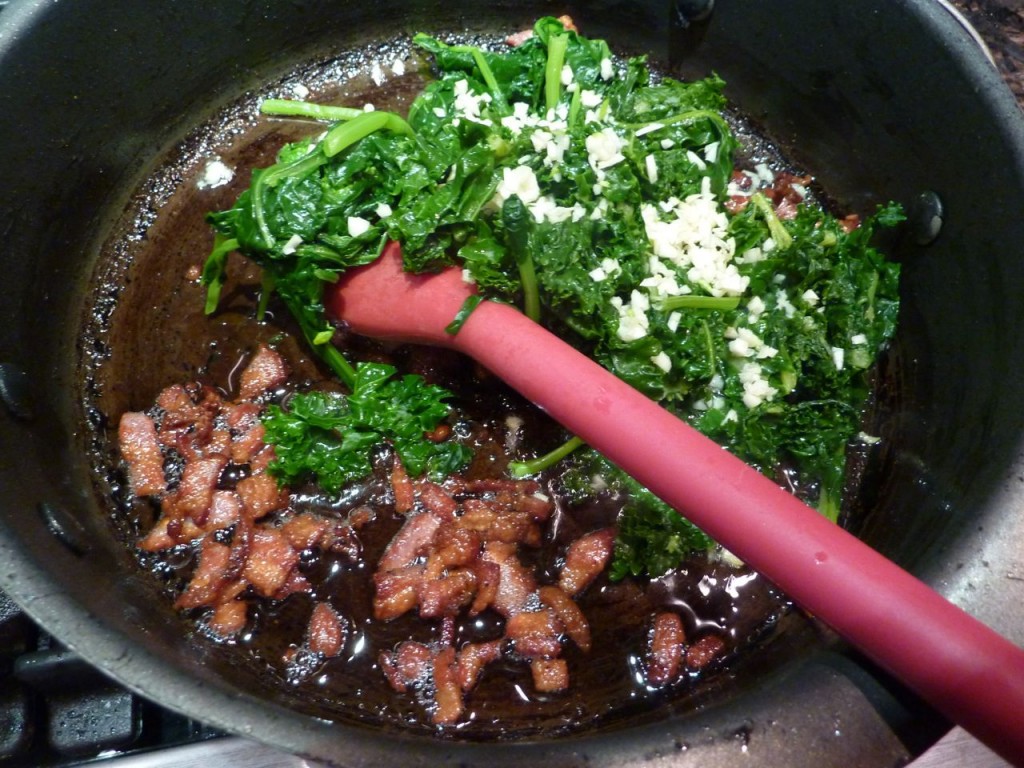
For those who are interested as I am in where these dishes came from – spaghetti alla carbonara is a typical Roman dish, hailing from the middle of the 20th century. There are anecdotes that attribute the name and the origin of this dish to woodcutters from Abruzzo who, while cutting wood for charcoal, would cook their pasta with eggs and cheese over a wood fire. The name carbonara supposedly derives from the Italian carbonaro, or charcoal burner. However, there is not any evidence of this dish being in existence prior to the Second World War. During and immediately following this devastating war, the local population was facing severe food shortages and the powdered eggs and bacon that were standard issue for the American troops were widely used for bartering. The Italians would use the acquired eggs and bacon as a sauce for their dried pasta, and it became quite popular with the American troops stationed there, who brought it home with them after the war. It is now a standard of Italian-American cuisine here in the states. I suspect that the dish has improved a bit with the addition of fresh eggs!
A quick lesson on blanching the greens. If you are using a very ‘light’ textured green, such as arugula, blanching is not necessary – you can just saute it. For greens that are a bit more dense, blanching will tenderize the greens, making them a little more palatable. But this step is not absolutely necessary, and if you don’t mind the texture, just saute your greens until they are as you like them!
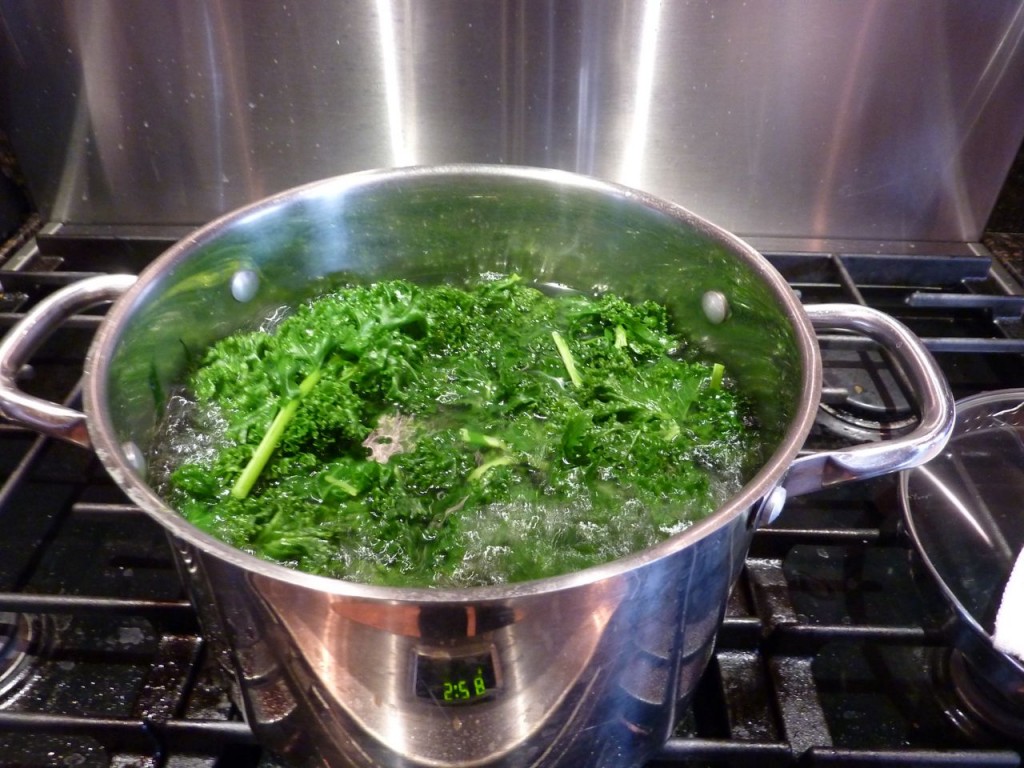
To blanch, fill a large pot with water and bring to a boil. Add salt to the water. Immerse the greens in the boiling water; the water will usually briefly stop boiling when the cold greens are added – bring the pot back to a boil WITHOUT placing the lid on the pot. The lid will trap enzymes that are released during the blanching, and the greens will turn a grayish green. If you allow the enzymes to escape, the greens will be a wonderful vibrant green. Cook the greens just until tender. Immediately remove from the boiling water and submerge them in a ice water bath. This halts the cooking process. When cool, remove from the ice bath and squeeze out at much water as possible.
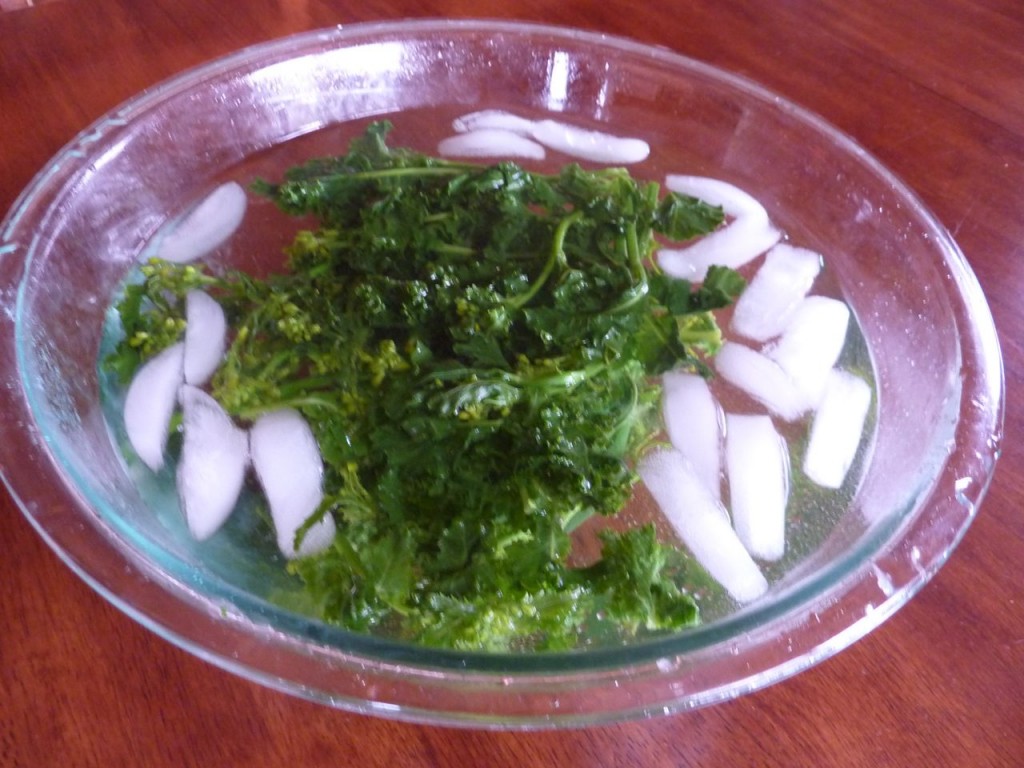
Blanching is usually done to all vegetables prior to freezing, as this process destroys/releases the aforementioned enzymes, which cause vegetables and fruits to ripen and then rot. Vegetables that have been blanched will be fresher looking and better tasting after a period of freezing than vegetable that have not.
Farmer’s Market Pasta – Whole Wheat Pasta with Poached Eggs and Spring Greens
Serves 4
2 tablespoons extra virgin olive oil
2 slices pancetta
2 cups blanched spring greens, chopped (see blanching instructions above)
2 cloves garlic, finely chopped
Kosher salt and freshly ground pepper
1 pound whole wheat spaghetti
4 fresh eggs
1 cup freshly grated grana, asiago stravecchio, or other hard aged cheese
Fill a large pot with water and bring to a boil over high heat.
Fill a large saucepan with water and bring to a simmer over high heat. Turn heat to low, just high enough to barely maintain a simmer; you should see bubble rising, but the water should not be moving too much.
Place the olive oil in a large saute pan and heat over medium heat. Add the pancetta and cook until just beginning to brown. Add the greens and garlic and cook just until heated through. Remove from heat.
Add salt to the boiling water in the large pot. Add the pasta and cook until just al dente. Reserve 1 cup of the pasta water. Drain the pasta, and add to the saute pan with the greens and garlic.
Carefully break the four eggs, one at a time, into the saucepan with the barely simmering water. If you wish, you can break the eggs into a small bowl or teacup and slowly lower it into the water using the bowl or cup. The goal here is to not break the yolk! Cook the eggs in the simmering water for 2 minutes. Using a slotted spoon, remove the eggs and place on a plate with a paper towel on top to absorb some of the excess water.
Place the saute pan with the greens and the pasta back on the burner over medium high heat. Combine until heated through; if the mixture seems a bit dry, add some of the reserved pasta water. Add the grated cheese, reserving a bit for the final garnish. Season with salt and pepper.
Serve the pasta in four preheated bowls. Top each with a poached egg. Season each egg with a bit of salt and pepper, and garnish with the remaining grated cheese.
A nice wine pairing here would be a great Soave, or, if you are a fan of red, the nice, light bodied Tai Rosso Rezzadore wine I just reviewed in my last post, from the Colli Berici DOC.
